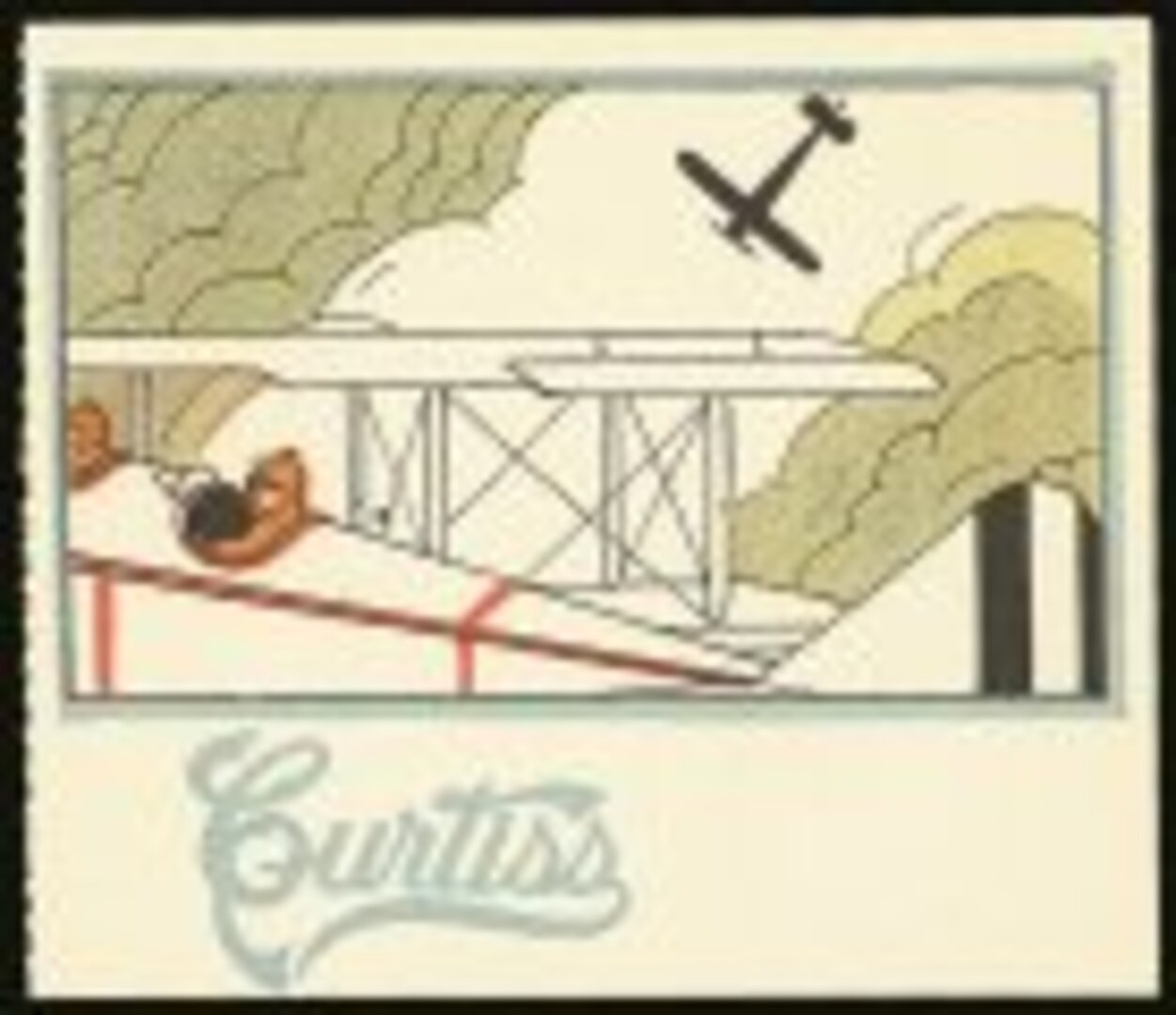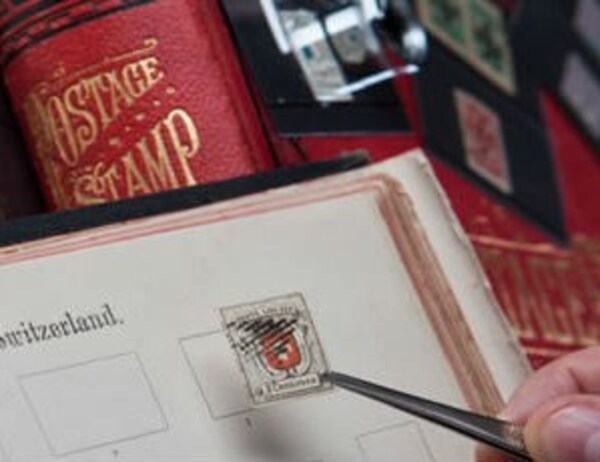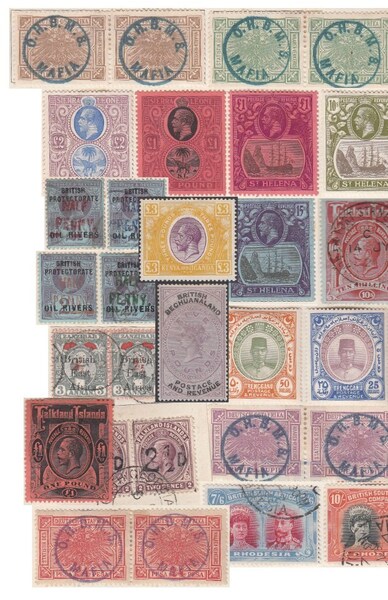Colombian Art Deco ‘Proofs’
Sadly, the identity of the artist of these remarkable stamp designs remains unknown but in 1920 a group of nineteen commercial advertising labels were produced by the Curtiss Aero Plane and Motor Company. Each is a beautiful pastel coloured representative of the Art Deco era. All feature the iconic ‘Flying Jenny’ bi-plane in flight, some as a silhouette with others above oceans, mountains and other landscapes, another shows the black outline of a Condor soaring over a cliff, yet another flying over the flags of many nations.
Each stamp is a vivid reminder of a bygone age with pilots, crew and even spectators wearing period dress as they stand by watching the unfolding scene. All have the distinctive italic ‘Curtiss’ pale blue company logo imprinted in the margin.
How then did eight of these labels subsequently become iconic air-post stamps used exclusively by an airline in Columbia? The answer rests with a brief look at the success of the Curtiss Aero Plane and Motor Company and an appreciation of the human thirst to enjoy and participate in the new aerial phenomenon!
Named after its founder, the talented motorcycle engineer and aviator Glenn H. Curtiss, the Curtiss Aero Plane Company was based in Buffalo, New York. It grew significantly during the First World War, responding to the demand for fighter and other aircraft as hostilities escalated in Europe. The company had gone public in 1916 and became a vast conglomerate during the post war years.
Stamps Revealing A Time Of Rapid Development In Air Transport
This was a time of rapid investment and development in virtually anything related to air-transport. In 1919 the Columbian government granted a franchise to the C.C.N.A to fly between the Caribbean Sea ports of Cartagena and Baranquilla in the north of Columbia, a distance of some 72 miles.
Part of the arrangement authorised C.C.N.A to issue its own postage stamps. With the agreement of the Curtiss Company, eight of the nineteen advertising labels were utilised. The choice was based on what space the design of each label would allow for an overprint and surcharge. Each overprint included the words “Compania Columbiana de Navegacion Aerea Porte Aereo” and showed a value of “$0.10”.
With the selvage removed the new stamps were subsequently attached to mail carried between the two ports. Only 100 sets of the eight labels were overprinted and carried on the first two flights on the 22nd February 1920 between Cartagena and Baranquilla with return flights on the 4th March 1920.
C.C.N.A ceased operations in April 1922, the concession granted by the Columbian government having ended in July 1920. It passed to S.C.A.D.T.A (Sociedad Columbo Alemana de Transporta Aereo) – the German Transport Society, that eventually was to become Avianca, still the Columbian State Airline.
Of course “Curtiss” is a name synonymous with probably the most famous and prized philatelic error of all time, the United States 1918 24c “Inverted Jenny”. Whilst we do not have any of these in the current sale, we are excited to be able to offer a number of the original 1920 Curtiss advertising labels; giving our clients an opportunity to own what are considered by many to be proofs or essays of the fabulous Columbia Air-Post stamps of 1920!

 General
General
 General
General
 General
General